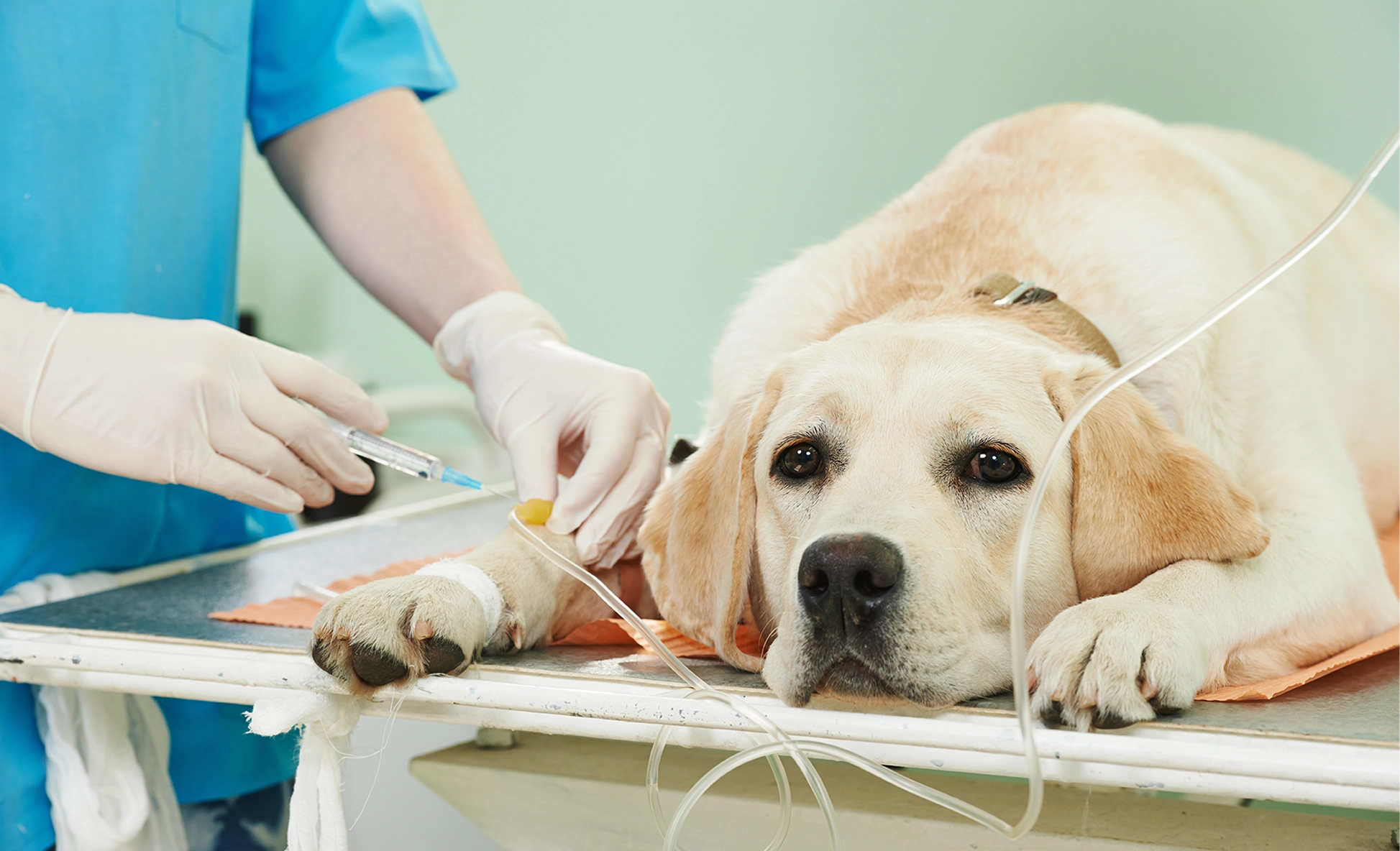
While we wish there was a way to say that lymphoma happens because of these specific, preventable reasons, there haven’t been any trustworthy discoveries as to what causes the cancer to develop. The only thing that we know for sure, through multiple studies and thorough research, is that there is a strong correlation between a dog’s breed and their predisposition to developing lymphoma at some point in their life.
Why does a dog’s breed matter?
With diseases like cancer, researchers have found that dogs make perfect study subjects. Due to a long history of breeding, dogs' genetics are much more isolated in comparison with many other species. Due to a long history of breeding, dogs’ genetics are more isolated than many other species. A purebred German Shepherd in Canada will likely share a lot of the same genome factors as a German Shepherd in England simply because they've been bred so thoroughly that at this point there is little genetic variation.1
Breeding presents a great way to identify patterns in certain genetic sequences for scientists. And, unfortunately, breeding can lead to higher chances for the same illness to present itself across many different dogs.
What have the studies found?
There have been many studies throughout the years covering cancer’s development in different dog breeds and how it develops and affects each breed differently.
In the studies surrounding lymphoma, researchers have looked into not only if your dog’s breed is predisposed, but also what type of lymphoma they may develop. Through multiple large population studies in America, Europe, Australia, and Japan, the dogs universally found at the highest risk for any kind of lymphoma were Boxers, Rottweilers, and Dobermans.3
Boxers’ high risk for lymphoma
The only benefit to being a high-risk breed is that there have been more studies done and more samples collected—and thus more information gleaned—about the development of cancer in these breeds. Boxers seem to present a unique challenge to researchers which makes it much easier to find information on Boxer lymphoma cases over any other breed.
Comparing studies across Europe, the US, and Japan, Boxers have been found to have a significantly higher risk for developing lymphoma in their lifetime than most other breeds everywhere they were studied, aside from Italy and the United Kingdom where they were only shown to have moderate risk.3 The risk increase goes for the overall quantity of Boxers that are diagnosed, as well as the ages that Boxers are diagnosed.
Boxers have a higher than expected rate of diagnosis for lymphoma in one of the largest age ranges of any other dog breed. They are diagnosed at a higher rate from age 7 to age 14, where other dogs with a higher than expected rate of diagnosis only range for about 2-3 years, the comparison makes the 7 year range for Boxers more daunting.2. Between genders, it has also been found that male boxers are also more likely to develop lymphoma than females.
Boxers are also more likely to be diagnosed with T-cell lymphoma, which is often the more aggressive and faster-developing form of lymphoma that requires an early diagnosis and treatment. About 90% of all boxer’s lymphoma cases originate from T-cells.1
Other significantly high- to high-risk breeds
While the following breeds have been studied less than Boxers have, these dogs also have been found to be predisposed at a notably higher rate than predicted. This list includes any additional information on that particular breed’s risk information found in the studies.
- Bullmastiffs: Seen to have a high diagnosis rate between age 4 and 6
- Bulldogs: Seen to have a high diagnosis rate under the age of 3 years old
- Basset Hounds
- St. Bernards
- Scottish Terriers
- Airedale Terrier
- Bouvier Des Flandres
- Labrador Retriever: often diagnosed with high-grade T-cell lymphoma
- English Springer Spaniel: Seen to have a high diagnosis rate between age 10 and 14
- Bernese Mountain dogs
- Golden Retrievers: Specifically high risk in the US and Japan
Overall, in ImpriMed’s history with helping treat canine lymphoma, 74% have been purebred, while only 26% were mixed or unknown breeds. And out of all the dogs represented, Golden Retrievers, Labrador Retrievers, and Labrador Retriever mixes represented the most cases out of any other breed group at 20.3%.
Other possible influences on lymphoma development
Breed and overall genetics are the most studied causes for lymphoma development in dogs. This is usually because studies can be done on data from many different veterinary oncologists as well as across many years. The information can be analyzed focusing on a multitude of different factors, including age, breed, type of lymphoma, remission time, location, etc.
However, breed may not be the only reason that a dog can be predisposed to lymphoma. The following possible reasons require further research to be confidently considered as plausible by scientists and oncologists, but they can provide anecdotal evidence that may answer some questions.
There was a case where households noticed that dogs with a direct familial relation to their own pet—perhaps it was a sibling, a parent, or a grandparent—had a nearly identical cancer diagnosis as their own dog. While this relates clearly to the genetics of the dogs, typically when comparing breeds it is almost unheard of to have an identical diagnosis. Similar situations are common, but matching in multiple factors like age at diagnosis, lymphoma cell types, remission times, and others is incredibly rare.2
This trend is hard to study due to the small sample of dogs that are known to be of the same lineage in the data of lymphoma cases, though it is an interesting thing to keep an eye out for if your dog has known siblings or parents that have been diagnosed with lymphoma.
Another possible factor for lymphoma predisposition that has a lot of situational evidence but has not yet been closely studied is environmental factors. This hasn’t been closely studied due to the vastness of the term “environmental factors,” which could mean anything from the country that the dog lives in, to the individual household.
However, an interesting discovery related to environmental factors was found in a study comparing the risk levels of dogs in different countries inside and outside of Europe. This particular study found that Golden Retrievers are considered high risk in the United States and Japan, but found at modest risk in the United Kingdom. There has been speculation that the overrepresentation of Golden Retrievers in the US and Japan relates to possible exposure to pollutants. Or, a more likely and easier proven theory, that it may just be that there are different genetic lineages between US Goldens and UK Goldens.3
How can ImpriMed Help
While there’s no real way to know the exact reason that your dog gets diagnosed with lymphoma, there is a way to know the exact way to respond to the diagnosis.
ImpriMed helps your veterinary oncologist develop the best possible treatment plan for your pet’s individual case. Rather than deciding on a treatment based on statistics or taking a trial-and-error approach, ImpriMed is able to test your dog’s lymphoma cells against different chemotherapy medicines and combinations to find the most efficient way to get your dog into remission for the longest possible time.
Using Artificial Intelligence and state-of-the-art labs, ImpriMed helps your vet get your dog an effective treatment and a Personalized Prediction Profile that lets you know what to expect during the treatment and during remission.


